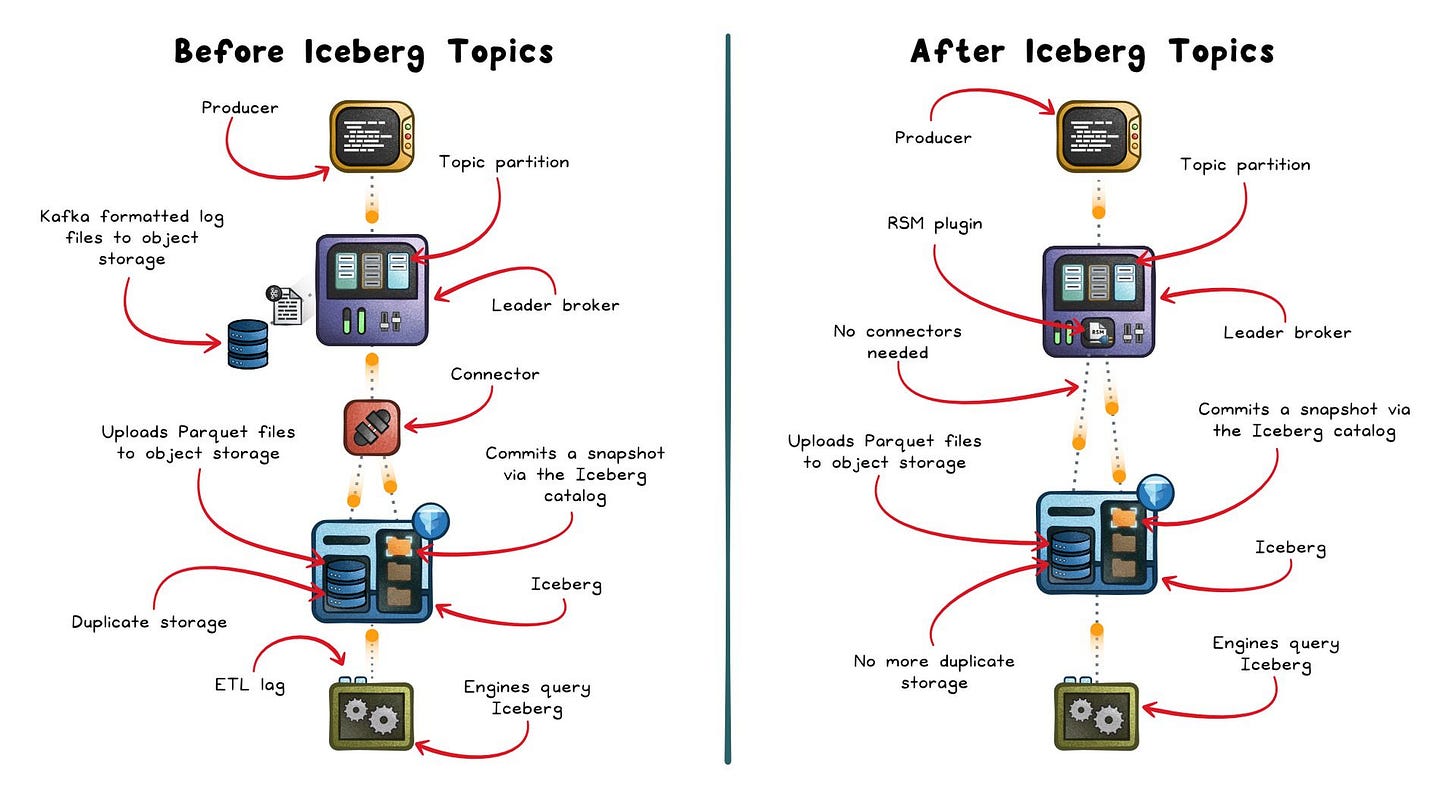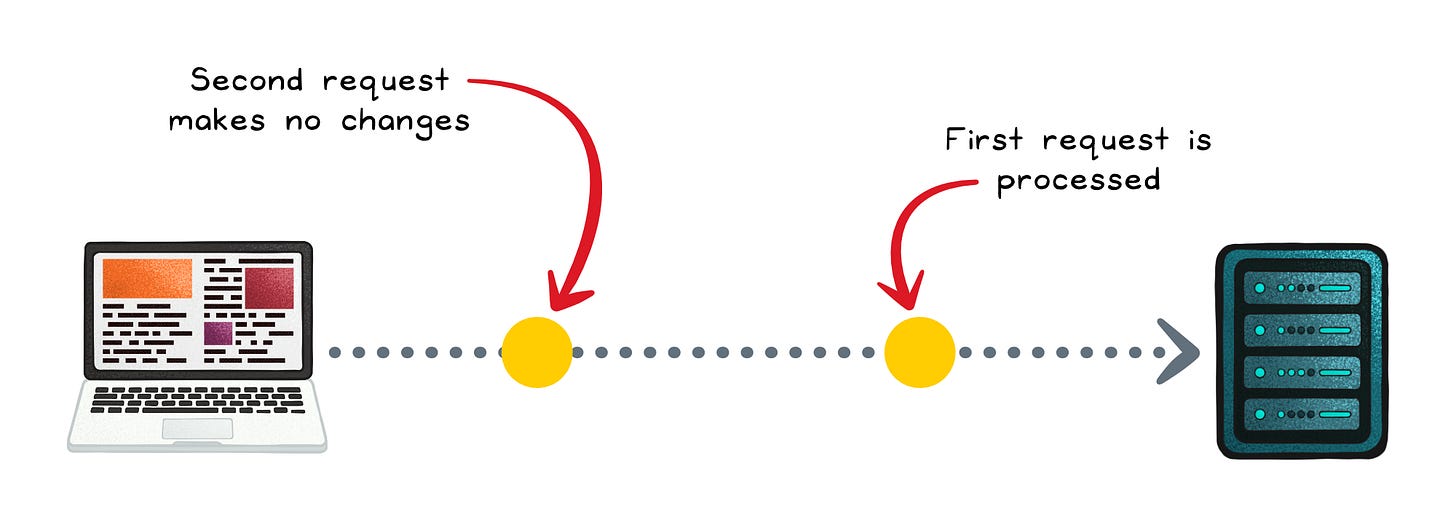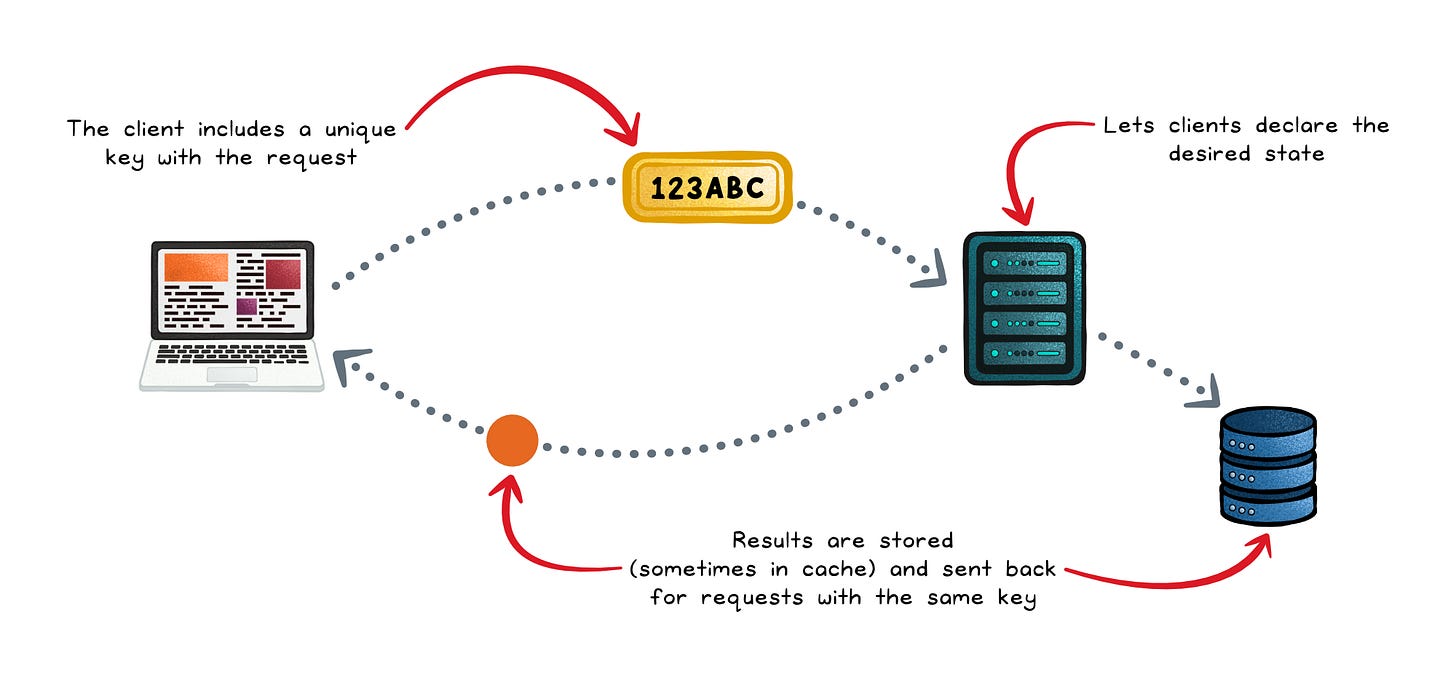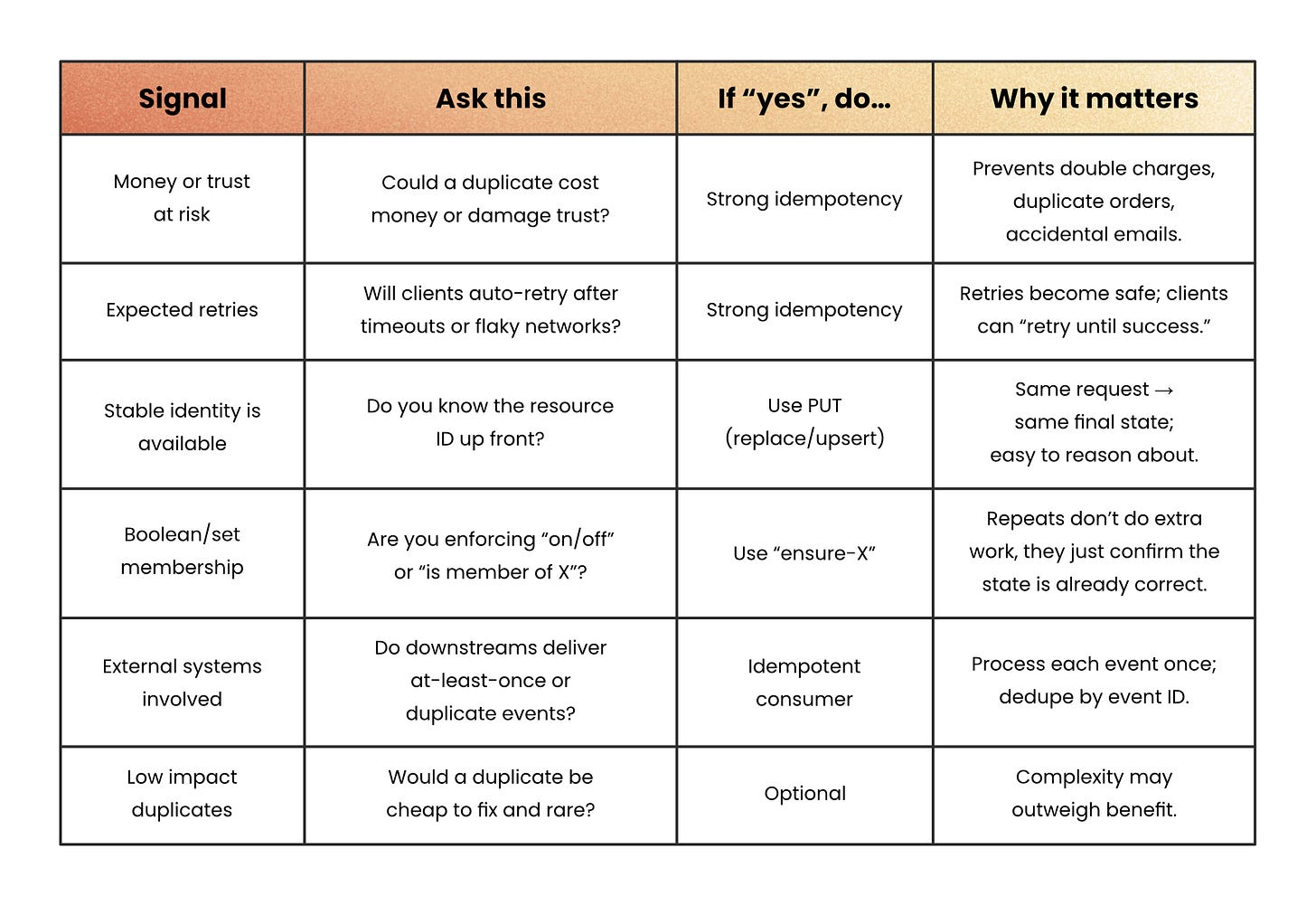Idempotency in API Design Clearly Explained
(4 Minutes) | When to Use it, How to Implement it, Benefits, Tradeoffs, Decision Table
Get our Architecture Patterns Playbook for FREE on newsletter signup:
Huge Release For Kafka, Iceberg Topics Go Open-Source
Presented by Aiven
Until now, proprietary vendor solutions dominated this space, locking teams into closed ecosystems. But with Aiven’s open-source contribution, the playing field changes.
No ETL overhead → Data lands in Iceberg format immediately, cutting out costly pipelines.
Diskless architecture → Run Kafka, Diskless, and Iceberg topics side-by-side in the same cluster.
Open-source first → Unlike proprietary options, this release is fully open-source under Apache-2.0, delivered as a Tiered Storage plugin, continuing the community-driven tradition of Kafka.
Unified access → Kafka events land as Iceberg tables, readable by Spark, Trino, Flink, etc, without extra connectors.
This is a big win for Kafka.
Idempotency in API Design
Ever clicked ‘Pay’ twice because a page froze? Or submitted the same form again just to be sure?
Those little actions can expose fragile APIs.
That’s where idempotency comes in: it guarantees that repeating a request leaves the system in the same safe state. If you design or use APIs, knowing when to apply it is one of the easiest ways to boost reliability.
What is Idempotency?
An idempotent API guarantees that repeating the same request has the same effect as requesting it once.
Think of it like deleting a file. The first delete removes it. The second delete does nothing new; the file is already gone. Responses may differ (e.g. first DELETE returns 200, the second returns 404), but the outcome is the same: the file no longer exists.
Without idempotency, retries can create duplicate charges, duplicate records, or unexpected side effects.
With it, retries become harmless.
How Teams Actually Implement It
Idempotency keys → The client sends a unique token (often a UUID) with the request. The server processes once, stores the result against the key, and replays that result on retries.
State & constraints → Use unique indexes (e.g. order_id) or “has this already happened?” checks to short-circuit duplicates safely.
Idempotent verbs & endpoints → Use PUT when you want to set or replace a resource, or design “ensure” endpoints that safely do nothing if the resource is already in the desired state.
The Benefits
Safe retries → Clients can repeat requests after timeouts or network drops without fear of duplicate actions.
Data integrity → Prevents double charges, duplicate records, or repeated side effects like emails.
Simpler error handling → Eliminates the worry of not knowing whether an action actually completed after a failed or slow response.
Better user experience → Users don’t get penalized for clicking twice or refreshing at the wrong time.
Operational flexibility → Load balancers and retries at scale become safer because duplicates don’t create extra work.
Easier recovery → Systems can recover from partial failures by re-sending requests with confidence.
The Tradeoffs
Extra complexity → You need logic to detect duplicates, store outcomes, and decide what to return.
Storage overhead → Idempotency keys or cached results must be saved, managed, and eventually expired.
Performance impact → Every request adds a lookup step, which can increase latency.
Distributed challenges → Multiple servers must share the same truth to avoid races or inconsistencies.
Limited scope → Some side effects, like sending emails or calling third-party services, are hard to make strictly idempotent.
Quick Examples
Payments → Charge once even if the client retries; return the original outcome on subsequent calls with the same key.
Checkout → Placing an order with an order_id, so duplicate submissions don’t create duplicate orders.
Webhooks → Processing each event by its unique ID so that retries from providers don’t trigger the same action twice.
Account sign-up → Creating a user profile with a client-provided ID; repeat calls return the same account instead of creating a new one.
When Not to Use It
Skip full idempotency when duplicates are harmless, very rare, and adds too much complexity for the benefit. Some high-throughput systems explicitly accept at-least-once delivery and push dedupe downstream because global idempotency would hurt performance. Document this clearly so clients do the right thing.
Decision Table: Should This Endpoint Be Idempotent?
Recap
Idempotency isn’t a fancy theory, it’s a practical safeguard against the everyday realities of flaky networks and impatient users.
By making repeat calls safe, you stop double charges, duplicate records, and downstream chaos before they happen.
But you don’t need to apply idempotency everywhere. Focus on places where money, trust, or retries are at stake, and document when you’ve chosen not to use it. That balance keeps your APIs both reliable and lean.
Subscribe to get simple-to-understand, visual, and engaging system design articles straight to your inbox:






